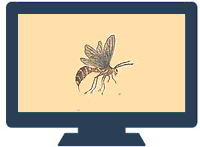Entomology, Department of

Department of Entomology: Distance Master of Science Projects
Date of this Version
2023
Document Type
Project
Citation
Master of Science Degree Project, Department of Entomology, University of Nebraska-Lincoln, 2023
Abstract
Introduction
Insects make up an integral part of the landscape in North America and across the world. They occupy a myriad of niches in food webs, function as predators and prey, and provide environmental services like pollination of flowering plants and decomposition of dead animal carcasses and fecal matter. They take part in ecosystems that are often delicately balanced, and so conservation is often a worthwhile effort in areas that would otherwise be trampled by human activity. In the western suburbs of Chicago, Illinois where I reside, there is a mix of both heavily developed areas as well as some well-preserved natural areas, many of them managed by local government agencies.
In this report I present a total of 79 insects representative of 7 different areas in this region, many of them collected with permission from preserves managed by the Forest Preserve District of DuPage County. This is mainly a citizen science project with a focus on contributing high quality specimens to the community. Six of the seven areas sampled are part of the western suburbs of Chicago: Big Woods, Burlington Park, Danada Equestrian Center (EC), Lemont, Night Heron Marsh, and Northern Naperville. There is also a sampling of insects from one outlier area: Union Pier in Berrien County, Michigan. I included this outlier area as it presented a good opportunity to get a unique sampling of insects present near the beaches of Lake Michigan that would likely have a much different distribution of insects. This set of 79 specimens was taken from a slightly larger collection and assembled in an attached Excel sheet. Other specimens from that larger collection were scattered thinly across too many areas to provide any meaningful addition to the comparative analysis portion of this study. The collection presented here includes specimens identified to Family (where possible), and the date and location the specimen was collected. I also present here an analysis of the results, comparing the distribution of different insect Orders within these areas.
As a citizen science project, the specimens analyzed here have also been uploaded to iNaturalist with accompanying photos for more precise identification by the wider entomological community. I hope the collection provided there, along with geographical location and date of collection, provides a helpful contribution to the scientific community in understanding insect biodiversity of the areas surveyed.
The entire collection can be found on iNaturalist here: https://www.inaturalist.org/observations?place_id=any&user_id=bdawson1138&verifiable=any and the identification number found in the notes of each photo on iNaturalist corresponds to the ID number on the excel spreadsheet attached here.
Conclusion
It is my intention that this collection and analysis contributes valuable data and insight on insect biodiversity in the region to the wider entomological community. The 79 specimens collected and displayed on iNaturalist are by no means an exhaustive sampling of the regions surveyed, but this kind of citizen science contribution is but one part of a larger effort by the community to catalogue the biodiversity in these areas. I would like to thank Dr. Tom Weissling of the University of Nebraska-Lincoln for his advice on collection and instruction on identifying the specimens of this collection.
Dawson 2023 Project Excel Sheet


Comments
Copyright 2023, Bradley Dawson